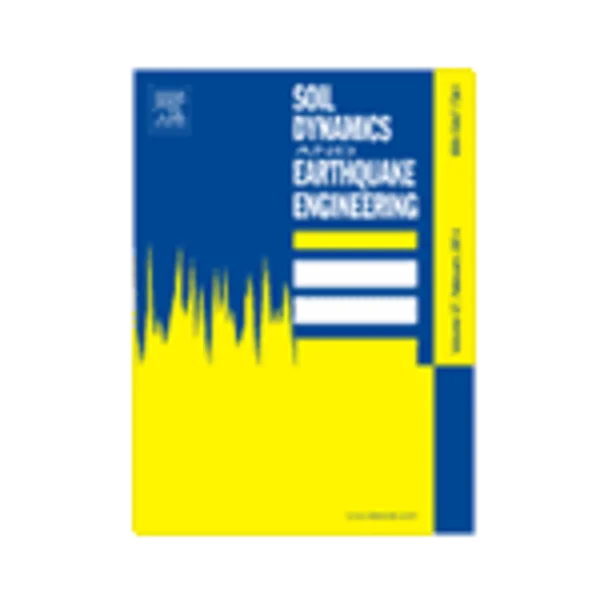-
development of the elarms methodology for earthquake early warning: realtime application in california and offline testing in japan
جزئیات بیشتر مقاله- تاریخ ارائه: 1392/07/24
- تاریخ انتشار در تی پی بین: 1392/07/24
- تعداد بازدید: 1006
- تعداد پرسش و پاسخ ها: 0
- شماره تماس دبیرخانه رویداد: -
in july 2009, the california integrated seismic network concluded a three-year study of earthquake early warning systems in california. three algorithms were expanded and examined during the study. here we discuss the history, methodology, and performance of one of the algorithms, elarms. earthquake alarm systems, or elarms, uses peak displacement and maximum predominant frequency of the p-wave to detect earthquakes and quantify their hazard in the seconds after rupture begins. elarms was developed for northern and southern california, and now processes waveforms in realtime from 603 seismic sensors across the state. we outline the methodology as currently implemented, present several example events from different regions of california, and summarize the performance in terms of false and missed alarms. elarms was also tested offline with a dataset of 84 large magnitude earthquakes from japan. the results from the japan dataset were used to create a statistical error model for the algorithm. the model can be used to provide realtime uncertainty estimates at any stage in processing. in august 2009 the cisn embarked on a second three-year study of earthquake early warning. as part of this ongoing research, we identify the technological and methodological challenges facing elarms. telemetry latencies and false alarm rates are two key opportunities for improvement.
مقالات جدیدترین رویدادها
-
استفاده از تحلیل اهمیت-عملکرد در ارائه الگوی مدیریت خلاقیت سازمانی و ارائه راهکار جهت بهبود
-
بررسی تاثیر ارزش وجوه نقد مازاد بر ساختار سرمایه شرکت های پذیرفته شده در بورس اوراق بهادار تهران
-
بررسی تأثیر سطح افشای ریسک بر قرارداد بدهی شرکت های پذیرفته شده در بورس اوراق بهادار تهران
-
بررسی تأثیر رتبه بندی اعتباری مبتنی بر مدل امتیاز بازار نوظهور بر نقد شوندگی سهام با تأکید بر خصوصی سازی شرکت ها
-
تأثیر آمیخته بازاریابی پوشاک ایرانی بر تصویر ذهنی مشتری پوشاک ایرانی (هاکوپیان)
-
بررسی پارامترهای موثر بر مقاومت برشی و مکانیسم خرابی ستون های کوتاه بتن آرمه مستطیلی با استفاده از مدل المان محدود غیر خطی
-
بررسی میزان تأثیر پارامترهای لرزهای در رفتار دینامیکی دیوارهای خاکی میخکوبی شده
-
ارزیابی مقاومت فشاری بتن خودتراکم حاوی مواد پودری مختلف از طریق روش امواج اولتراسونیک
-
نقش اماکن گردشگری در توسعه کارآفرینی شهرها مخصوصا شهرستان ارومیه
-
activation of prosurvival signaling pathways during the memory phase of volatile anesthetic preconditioning in human myocardium: a pilot study
مقالات جدیدترین ژورنال ها
-
مدیریت و بررسی افسردگی دانش آموزان دختر مقطع متوسطه دوم در دروان کرونا در شهرستان دزفول
-
مدیریت و بررسی خرد سیاسی در اندیشه ی فردوسی در ادب ایران
-
واکاوی و مدیریت توصیفی قلمدان(جاکلیدی)ضریح در موزه آستان قدس رضوی
-
بررسی تاثیر خلاقیت، دانش و انگیزه کارکنان بر پیشنهادات نوآورانه کارکنان ( مورد مطالعه: هتل های 3 و 4 ستاره استان کرمان)
-
بررسی تاثیر کیفیت سیستم های اطلاعاتی بر تصمیم گیری موفق در شرکتهای تولیدی استان اصفهان (مورد مطالعه: مدیران شرکتهای تولیدی استان اصفهان)
-
بازشناسی تطبیقی ادبیات غنایی بر قالی سنگشکو با تاکید بر نگاره های مصور خمسه نظامی در دورۀ صفوی (مطالعه موردی: دیدار لیلی و مجنون و آبتنی شیرین)
-
بررسی تاثیر عوامل روانشناختی بر قصد خرید و تعهد مشتری (مطالعه موردی: مشتریان پوشاک هاکوپیان مشهد)
-
isolation, purification and identification of β-carotene from azolla pinnata r. br. as a new carotenoid wealthy source
-
seismic loss assessment: the case study of the power distribution network in arak city, iran
-
evaluation of aesthetic, functional, and environmental effects on the design of urban open spaces: a case study of istanbul şişhane park, turkey




سوال خود را در مورد این مقاله مطرح نمایید :